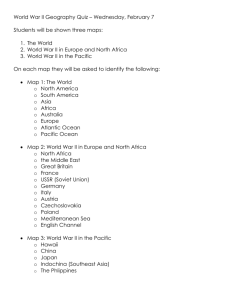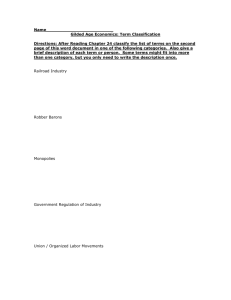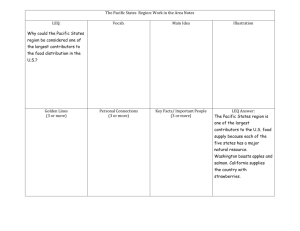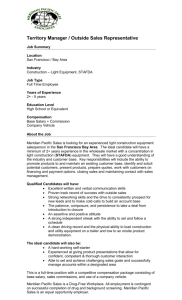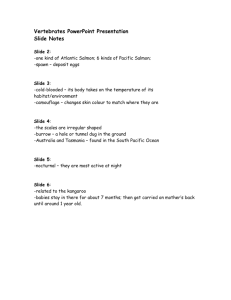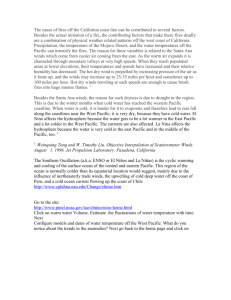Scientific Poster - Robert Hart, Florida State University
advertisement
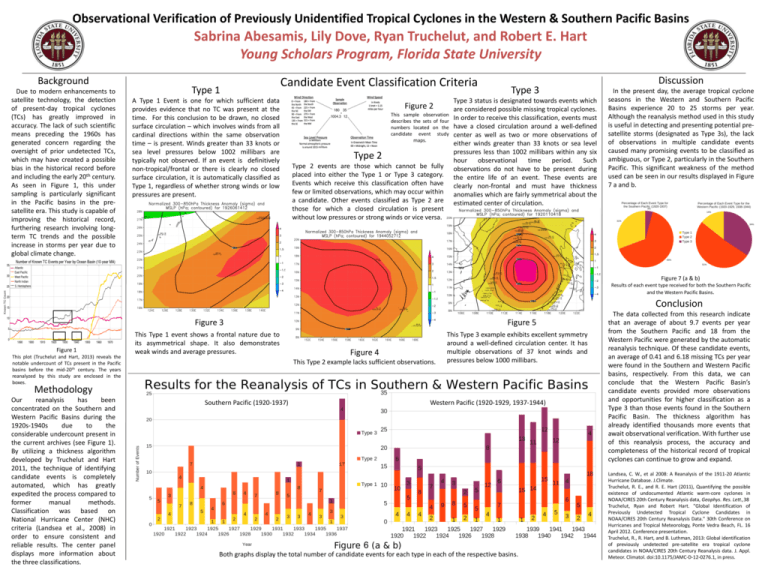
Observational Verification of Previously Unidentified Tropical Cyclones in the Western & Southern Pacific Basins Sabrina Abesamis, Lily Dove, Ryan Truchelut, and Robert E. Hart Young Scholars Program, Florida State University Background Due to modern enhancements to satellite technology, the detection of present-day tropical cyclones (TCs) has greatly improved in accuracy. The lack of such scientific means preceding the 1960s has generated concern regarding the oversight of prior undetected TCs, which may have created a possible bias in the historical record before and including the early 20th century. As seen in Figure 1, this under sampling is particularly significant in the Pacific basins in the presatellite era. This study is capable of improving the historical record, furthering research involving longterm TC trends and the possible increase in storms per year due to global climate change. Type 1 A Type 1 Event is one for which sufficient data provides evidence that no TC was present at the time. For this conclusion to be drawn, no closed surface circulation – which involves winds from all cardinal directions within the same observation time – is present. Winds greater than 33 knots or sea level pressures below 1002 millibars are typically not observed. If an event is definitively non-tropical/frontal or there is clearly no closed surface circulation, it is automatically classified as Type 1, regardless of whether strong winds or low pressures are present. Candidate Event Classification Criteria Figure 2 This sample observation describes the sets of four numbers located on the candidate event study maps. Type 2 Type 2 events are those which cannot be fully placed into either the Type 1 or Type 3 category. Events which receive this classification often have few or limited observations, which may occur within a candidate. Other events classified as Type 2 are those for which a closed circulation is present without low pressures or strong winds or vice versa. Type 3 Type 3 status is designated towards events which are considered possible missing tropical cyclones. In order to receive this classification, events must have a closed circulation around a well-defined center as well as two or more observations of either winds greater than 33 knots or sea level pressures less than 1002 millibars within any six hour observational time period. Such observations do not have to be present during the entire life of an event. These events are clearly non-frontal and must have thickness anomalies which are fairly symmetrical about the estimated center of circulation. Discussion In the present day, the average tropical cyclone seasons in the Western and Southern Pacific Basins experience 20 to 25 storms per year. Although the reanalysis method used in this study is useful in detecting and presenting potential presatellite storms (designated as Type 3s), the lack of observations in multiple candidate events caused many promising events to be classified as ambiguous, or Type 2, particularly in the Southern Pacific. This significant weakness of the method used can be seen in our results displayed in Figure 7 a and b. Figure 7 (a & b) Results of each event type received for both the Southern Pacific and the Western Pacific Basins. Conclusion Figure 3 Figure 1 This plot (Truchelut and Hart, 2013) reveals the notable undercount of TCs present in the Pacific basins before the mid-20th century. The years reanalyzed by this study are enclosed in the boxes. Methodology Our reanalysis has been concentrated on the Southern and Western Pacific Basins during the 1920s-1940s due to the considerable undercount present in the current archives (see Figure 1). By utilizing a thickness algorithm developed by Truchelut and Hart 2011, the technique of identifying candidate events is completely automated, which has greatly expedited the process compared to former manual methods. Classification was based on National Hurricane Center (NHC) criteria (Landsea et al., 2008) in order to ensure consistent and reliable results. The center panel displays more information about the three classifications. This Type 1 event shows a frontal nature due to its asymmetrical shape. It also demonstrates weak winds and average pressures. Figure 5 Figure 4 This Type 2 example lacks sufficient observations. This Type 3 example exhibits excellent symmetry around a well-defined circulation center. It has multiple observations of 37 knot winds and pressures below 1000 millibars. Results for the Reanalysis of TCs in Southern & Western Pacific Basins Southern Pacific (1920-1937) Western Pacific (1920-1929, 1937-1944) 6 6 Both graphs display the total number of candidate events for each type in each of the respective basins. The data collected from this research indicate that an average of about 9.7 events per year from the Southern Pacific and 18 from the Western Pacific were generated by the automatic reanalysis technique. Of these candidate events, an average of 0.41 and 6.18 missing TCs per year were found in the Southern and Western Pacific basins, respectively. From this data, we can conclude that the Western Pacific Basin’s candidate events provided more observations and opportunities for higher classification as a Type 3 than those events found in the Southern Pacific Basin. The thickness algorithm has already identified thousands more events that await observational verification. With further use of this reanalysis process, the accuracy and completeness of the historical record of tropical cyclones can continue to grow and expand. Landsea, C. W., et al 2008: A Reanalysis of the 1911-20 Atlantic Hurricane Database. J.Climate. Truchelut, R. E., and R. E. Hart (2011), Quantifying the possible existence of undocumented Atlantic warm‐core cyclones in NOAA/CIRES 20th Century Reanalysis data, Geophys. Res. Lett.,38 Truchelut, Ryan and Robert Hart. "Global Identification of Previously Undetected Tropical Cyclone Candidates in NOAA/CIRES 20th Century Reanalysis Data." 30th Conference on Hurricanes and Tropical Meteorology, Ponte Vedra Beach, FL. 16 April 2012. Conference presentation. Truchelut, R., R. Hart, and B. Luthman, 2013: Global identification of previously undetected pre-satellite era tropical cyclone candidates in NOAA/CIRES 20th Century Reanalysis data. J. Appl. Meteor. Climatol. doi:10.1175/JAMC-D-12-0276.1, in press.
